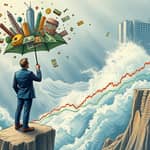
In an era of split-second decision making and global connectivity, understanding how and why individuals follow the crowd has never been more critical. Rapid market dynamics and social pressure combine to create powerful waves of collective behavior that can drive booms and busts within hours.
The concept of herd mentality has deep roots in psychology and economics. Early pioneers like Gustave Le Bon, Wilfred Trotter, and Sigmund Freud explored the nature of crowd psychology, while Thorstein Veblen later linked imitation to social status in consumer behavior. These thinkers set the stage for modern behavioral economics, which emphasizes inherent psychological biases over purely rational models.
Humans are wired to look to others when facing uncertainty. In high-stakes markets, this impulse can become overwhelming:
Classic experiments by Solomon Asch demonstrated that individuals will often conform to a majority view, even when it contradicts their own senses. Building on this, research into information cascades shows that when early adopters appear successful, later participants often ignore personal data and simply follow the herd.
Today’s trading environment accelerates herd effects dramatically. High-frequency trading algorithms, real-time news feeds, and social media chatter create an ecosystem where sentiment can shift in milliseconds. Information cascades unfold instantly across global networks, turning investor emotions into market-moving forces.
Professional and retail investors alike respond to the same signals—price surges, viral tweets, flash news alerts—often resulting in synchronized buy-ins or mass sell-offs, detached from underlying fundamentals.
These examples reveal how collective investor enthusiasm can propel asset prices far beyond intrinsic value—and how quickly those elevations can reverse.
Herd-driven markets carry steep costs:
Research shows that only about 5% of informed individuals can sway the decisions of the remaining 95%, highlighting how a small group of influencers or early movers can trigger widespread shifts.
While innate, herd tendencies can be managed through conscious effort and structural safeguards:
By embedding critical evaluation practices into decision processes, individuals can resist blind conformity and make more informed choices.
Regulators and exchanges have introduced measures such as market halts and enhanced disclosure requirements to blunt herd-induced volatility. Looking ahead, leveraging technology—like AI-driven risk alerts—and fostering investor education programs will be vital to maintaining stable markets.
Moreover, positive herding can be channeled toward collective good: environmental initiatives, public health campaigns, and social impact investing demonstrate how synchronized behavior can serve beneficial ends when guided by transparent, pro-social frameworks.
Understanding the behavioral economics of herd mentality is not just an academic exercise—it’s a roadmap for surviving and thriving in the age of rapid markets. By combining historical insights, psychological awareness, and practical safeguards, investors and policymakers can transform potentially destructive group dynamics into opportunities for resilience and growth.
References













